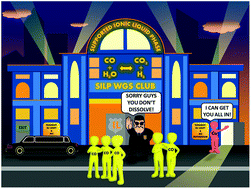Improving the performance of supported ionic liquid phase (SILP) catalysts for the ultra-low-temperature water–gas shift reaction using metal salt additives†
Abstract
Supported ionic liquid phase (SILP) catalyst systems containing homogeneous Ru complexes dissolved in ionic liquids (ILs) catalyze the water–gas shift reaction (WGSR) at very low temperatures, i.e., between 120 and 160 °C. One limiting factor of the SILP WGS technology is the low solubility of CO in most ILs. To overcome this issue, we study the influence of different transition metal chloride additives on the activity of Ru-based WGS SILP catalysts. CuCl as the additive was found to enhance the activity by almost 30%. This increase in activity peaks at a CuCl addition of 4 M as a result of the interplay between the increasing CO uptake in the ionic liquid film as evidenced by means of CO sorption and thermogravimetry, and the increasing, unfavorable ionic liquid acidity at too high CuCl concentrations. The respective chlorocuprate species were identified by means of in situ diffuse reflectance infrared Fourier transform spectroscopy (DRIFTS) in combination with density functional theory (DFT) calculations. We attribute the enhanced catalytic performance to cuprate ions that act as CO shuttles within the ionic liquid film.

- This article is part of the themed collection: 2019 Green Chemistry Hot Articles


 Please wait while we load your content...
Please wait while we load your content...